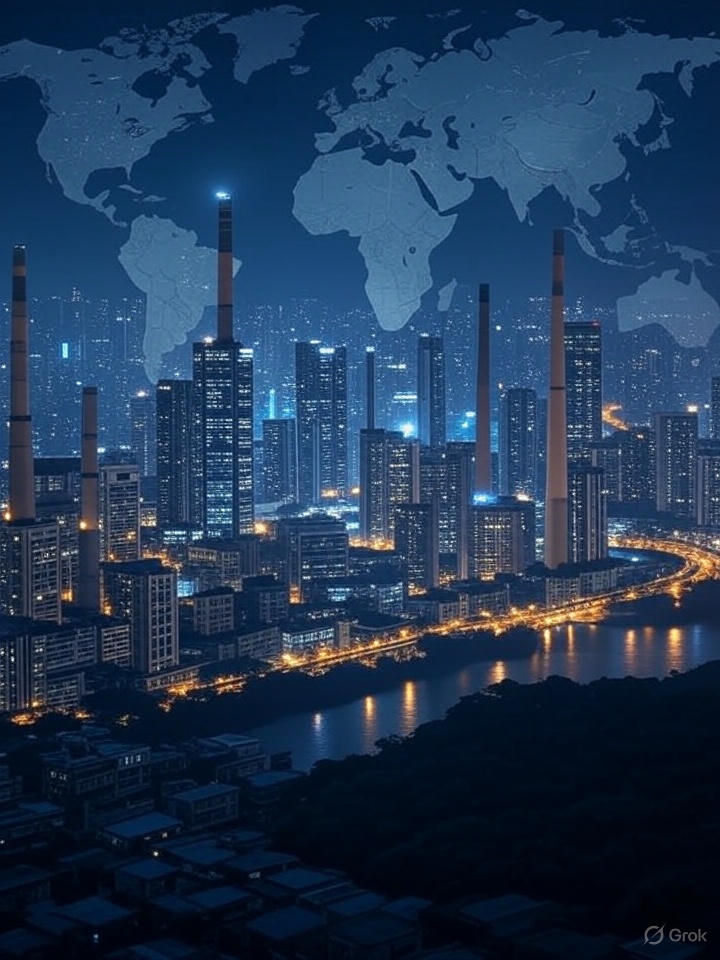The Robot Tide: China’s Mass-Produced Machines Are Redefining Your Future
- thebrink2028
- Sep 11
- 4 min read

In a small Ohio warehouse, Maria, a 34-year-old single mother, watches a quadruped robot unload a truck. It moves with unsettling grace, its sensors glinting under fluorescent lights. Her manager says it’s “just a tool,” but Maria’s been at the plant for a decade—she knows tools don’t replace entire shifts. Last week, she overheard a supplier mention that these robots, churned out by a Chinese firm called StarTech Dynamics, cost half as much as their American-made rivals. By next month, ten more are arriving. Maria wonders if her forklift certification will mean anything by Christmas. What happens when the machines don’t just assist but decide who stays and who goes?
China’s Robotics Surge Is Outpacing Global Competitors, Driven by State-Backed Scale and Cost-Cutting Innovation
StarTech Dynamics (Unitree Robotics parallel)
StarTech Dynamics, a Hangzhou-based firm, commands 69% of the global quadruped robot market, producing units like the B2-W, a wheel-legged robot dog that navigates rough terrain for agriculture and rescue missions. Unlike Western competitors, StarTech develops its own motors and chips, slashing costs by 70% compared to imported systems. This vertical integration, backed by China’s manufacturing ecosystem, allows them to produce robots at $9,997—accessible to small businesses, not just corporations. By March 2025, they shipped 2,000 units globally, with Ningbo’s airport logging exports to Germany. Western firms like Boston Dynamics, while advanced in AI, struggle to match this scale and price.
Western media frames this as a “tech race,” downplaying China’s hardware dominance to focus on U.S. AI superiority. This narrative obscures how China’s cost advantage is reshaping markets, making affordable robots a reality for small players, not just tech giants.
Robots Are Already Replacing Human Labor in Unexpected Sectors, Not Just Factories
AgiBot’s General-Purpose Humanoids
AgiBot, a Shanghai startup, began mass-producing humanoid robots in December 2024, hitting 962 units by year-end. These robots, used for tasks like folding clothes and inventory management, are deployed in retail and hospitality—sectors once thought immune to automation. A Shanghai mall now uses AgiBot’s Raise A1 to guide customers, reducing staff costs by 30%. This isn’t just efficiency; it’s a cultural shift, normalizing robots in daily life.
Official narratives emphasize industrial robotics, ignoring how humanoids are infiltrating service industries. This sidesteps the immediate threat to low-wage workers, who face displacement without retraining programs.
Timeline of Drivers
2016-2020: China’s Robotics Industry Development Plan establishes infrastructure, making it the world’s largest industrial robot market (30% global share).
2023: AgiBot launches, leveraging China’s AI boom and ex-Huawei talent to build humanoids.
2024: StarTech Dynamics and others scale quadruped production, exporting to Europe. Ningbo airport logs first robot shipments.
2025: Six Chinese firms, including StarTech and AgiBot, plan to produce 1,000+ humanoids, valued at $616 million. China’s patent filings (5,688) dwarf U.S.’s (1,483).
Geopolitical Push: “Made in China 2025” aims for 50% global robot market share, fueled by demographic needs (aging population) and tech self-sufficiency.
Cultural Shift: Robots like StarTech’s H1 appear at public events, normalizing their presence.
What the News Hides: Under-Covered Facts
Supply Chain Dependency: U.S. firms like Tesla rely on Chinese suppliers for 60% of humanoid robot components, vulnerable to tariffs and trade disruptions. This isn’t just a tech gap; it’s a strategic weakness that could delay Western production by years. Impact: Companies and workers face uncertainty, as policy shifts could spike costs or halt supply, affecting job security.
Technical Limits Exposed: A Beijing robot half-marathon in 2025 showed only 6 of 20 humanoids finished, revealing issues in navigation and energy endurance. This suggests mass-produced robots aren’t yet reliable for complex tasks, a fact buried under hype about production scale.
Impact: Businesses investing in robots may face unexpected downtime, reshaping adoption timelines.
Social Normalization: Chinese robots are marketed to consumers, not just industries. StarTech’s Go2 robot dog, priced at $9,997, is pitched as a household companion, shifting public perception faster than in the West.
Impact: This accelerates acceptance, pressuring workers to adapt to a robot-integrated society.
TheBrinks: What Happens Next
Most Likely (2026-2028): China dominates low-cost robot production, capturing 60% of the global market by 2028. Small businesses in the U.S. and Europe adopt Chinese robots, driving a 20% reduction in service and logistics jobs. Western firms pivot to high-end, AI-driven robots, but cost barriers limit their reach. If, China’s supply chain and policy support remain stable; U.S. tariffs don’t escalate significantly. We will see Increased exports (e.g., Ningbo shipments double by mid-2026), new Chinese robotics subsidies. China’s manufacturing ecosystem and patent lead give it unmatched scale, while Western reliance on Chinese components delays competition.
Early Warning Indicators: Watch for job ads emphasizing “robot oversight” skills, rising Chinese robot exports in trade reports, and U.S. tariff hikes targeting tech imports by Q2 2026. Social media buzz about robots in retail or homes will signal cultural shifts.
Reader Reward ($50)
One sharp question to advance the story: How will you retrain or pivot when robots like StarTech’s B2-W or AgiBot’s Raise A1 become your coworkers in the next 18 months? Submit your answer within 48 hours to win.
Your awareness is the first step—by simply engaging with truths many fear to face, you're already part of TheBrink movement.
We'd love to invite you to subscribe to ensure you never miss our content. Many platforms and social media channels have been restricting or removing our posts, so subscribing is the best way to receive our stories directly in your inbox, unfiltered and uncensored.
Your sponsorships and donations fuel our mission to uncover hidden truths and inspire change. Click "Sponsor" or contact thebrink2028@gmail.com for partnership opportunities.
Thank you for being part of this journey.


